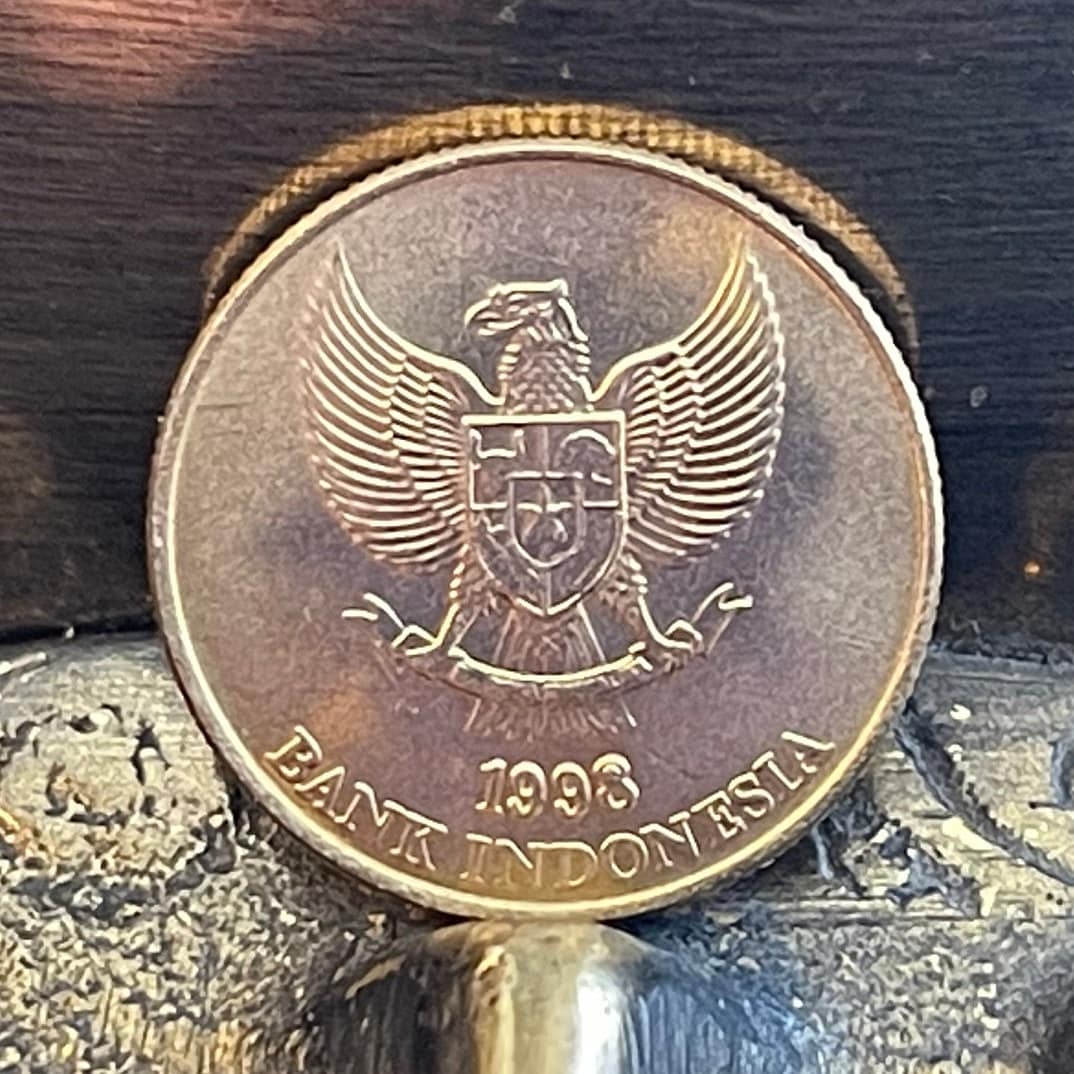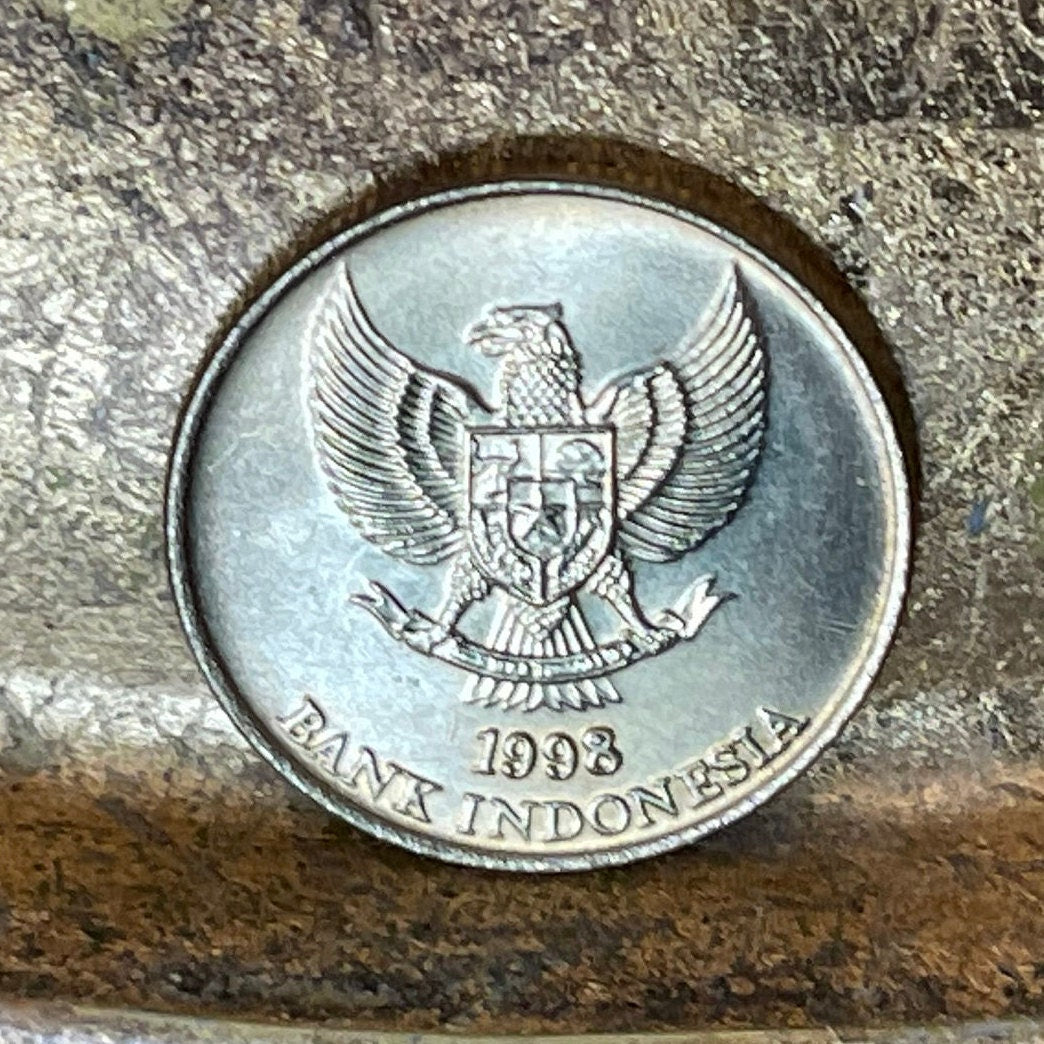elemintalshop
Komodo Dragon 50 Rupiah Indonesia Authentic Coin Money for Jewelry and Craft Making
Komodo Dragon 50 Rupiah Indonesia Authentic Coin Money for Jewelry and Craft Making
Couldn't load pickup availability
Komodo Dragon 50 Rupiah Indonesia Authentic Coin Charm for Jewelry and Craft Making
Obverse
The National Emblem of Indonesia (Garuda Pancasila) and the date below
Lettering:
BHINNEKA TUNGGAL IKA
1996
BANK INDONESIA
Translation:
Unity in Diversity
Bank of Indonsia
Reverse
Komodo dragon lizard (Varanus komodoensis) and the denomination above
Features
Issuer Indonesia
Period Republic (1950-date)
Type Standard circulation coin
Years 1991-1998
Value 50 Rupiah
50 IDR = USD 0.0034
Currency Rupiah (1965-date)
Composition Aluminium-bronze
Weight 3.18 g
Diameter 20 mm
Thickness 1.58 mm
Shape Round
Technique Milled
Orientation Medal alignment ↑↑
Number N# 3697
References KM# 52, Schön# 43
Wikipedia on Gender in Komodo Dragons:
A Komodo dragon at London Zoo named Sungai laid a clutch of eggs in late 2005 after being separated from a male company for more than two years. Scientists initially assumed she had been able to store sperm from her earlier encounter with a male, an adaptation known as superfecundation. On 20 December 2006, it was reported that Flora, a captive Komodo dragon living in the Chester Zoo in England, was the second known Komodo dragon to have laid unfertilised eggs: she laid 11 eggs, and seven of them hatched, all of them male. Scientists at Liverpool University in England performed genetic tests on three eggs that collapsed after being moved to an incubator, and verified Flora had never been in physical contact with a male dragon. After Flora's eggs' condition had been discovered, testing showed Sungai's eggs were also produced without outside fertilization. On 31 January 2008, the Sedgwick County Zoo in Wichita, Kansas, became the first zoo in the Americas to document parthenogenesis in Komodo dragons. The zoo has two adult female Komodo dragons, one of which laid about 17 eggs on 19–20 May 2007. Only two eggs were incubated and hatched due to space issues; the first hatched on 31 January 2008, while the second hatched on 1 February. Both hatchlings were males.
Komodo dragons have the ZW chromosomal sex-determination system, as opposed to the mammalian XY system. Male progeny prove Flora's unfertilized eggs were haploid (n) and doubled their chromosomes later to become diploid (2n) (by being fertilized by a polar body, or by chromosome duplication without cell division), rather than by her laying diploid eggs by one of the meiosis reduction-divisions in her ovaries failing. When a female Komodo dragon (with ZW sex chromosomes) reproduces in this manner, she provides her progeny with only one chromosome from each of her pairs of chromosomes, including only one of her two sex chromosomes. This single set of chromosomes is duplicated in the egg, which develops parthenogenetically. Eggs receiving a Z chromosome become ZZ (male); those receiving a W chromosome become WW and fail to develop, meaning that only males are produced by parthenogenesis in this species.
It has been hypothesised that this reproductive adaptation allows a single female to enter an isolated ecological niche (such as an island) and by parthenogenesis produce male offspring, thereby establishing a sexually reproducing population (via reproduction with her offspring that can result in both male and female young).[64] Despite the advantages of such an adaptation, zoos are cautioned that parthenogenesis may be detrimental to genetic diversity.
Share










The product was as described and arrived in a timely manner during the holiday season.
Was glad to get these coins. These are for my international coin collection. These are ones I have not found elsewhere. Trying to understand how to order from one seller rather than the same thing from different sellers XO. Thank you.
Cute coin, as described, great gift
Awesome coin and responsive seller!
Great addition to collection. Thank you.









